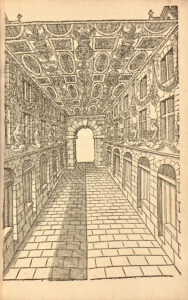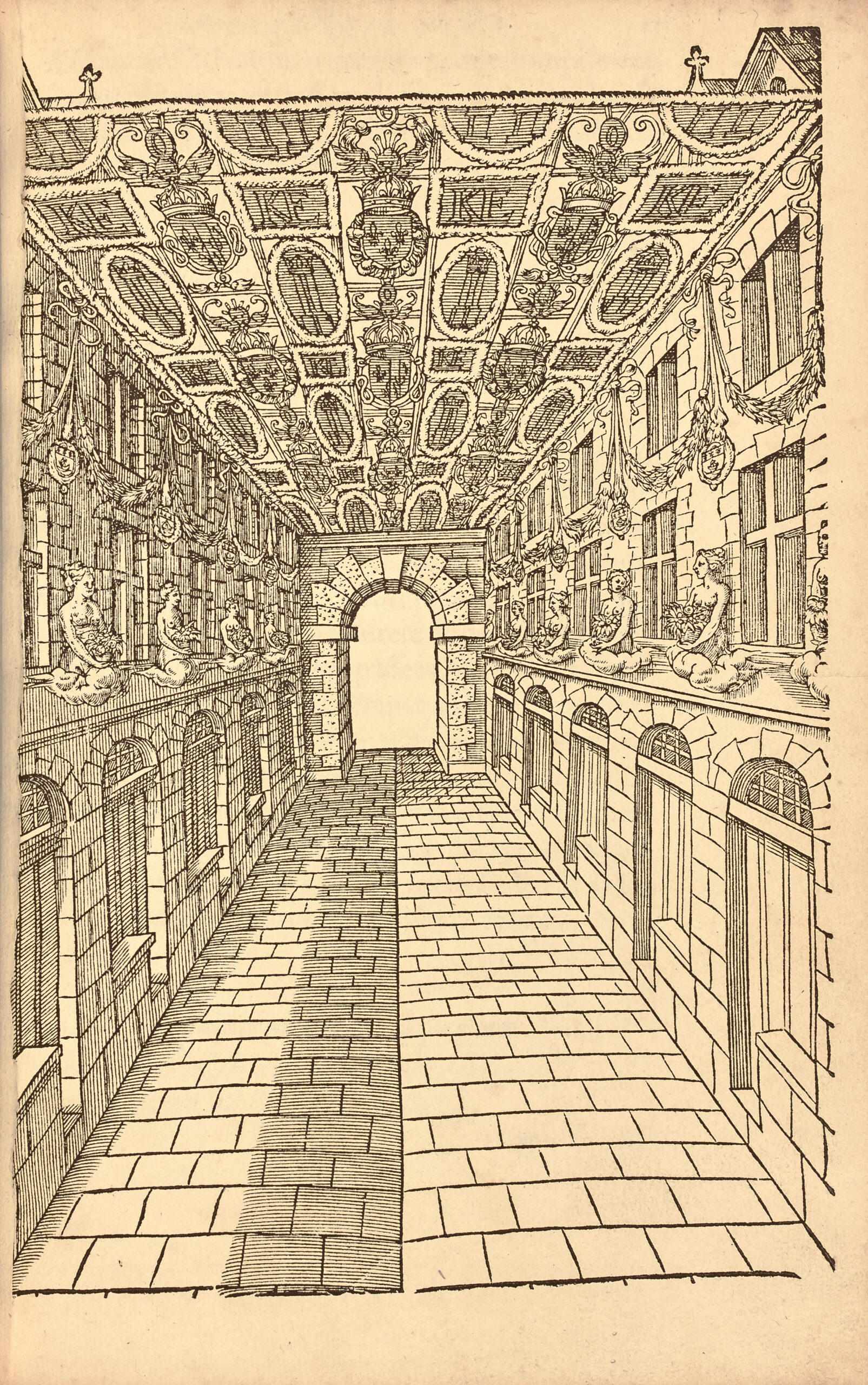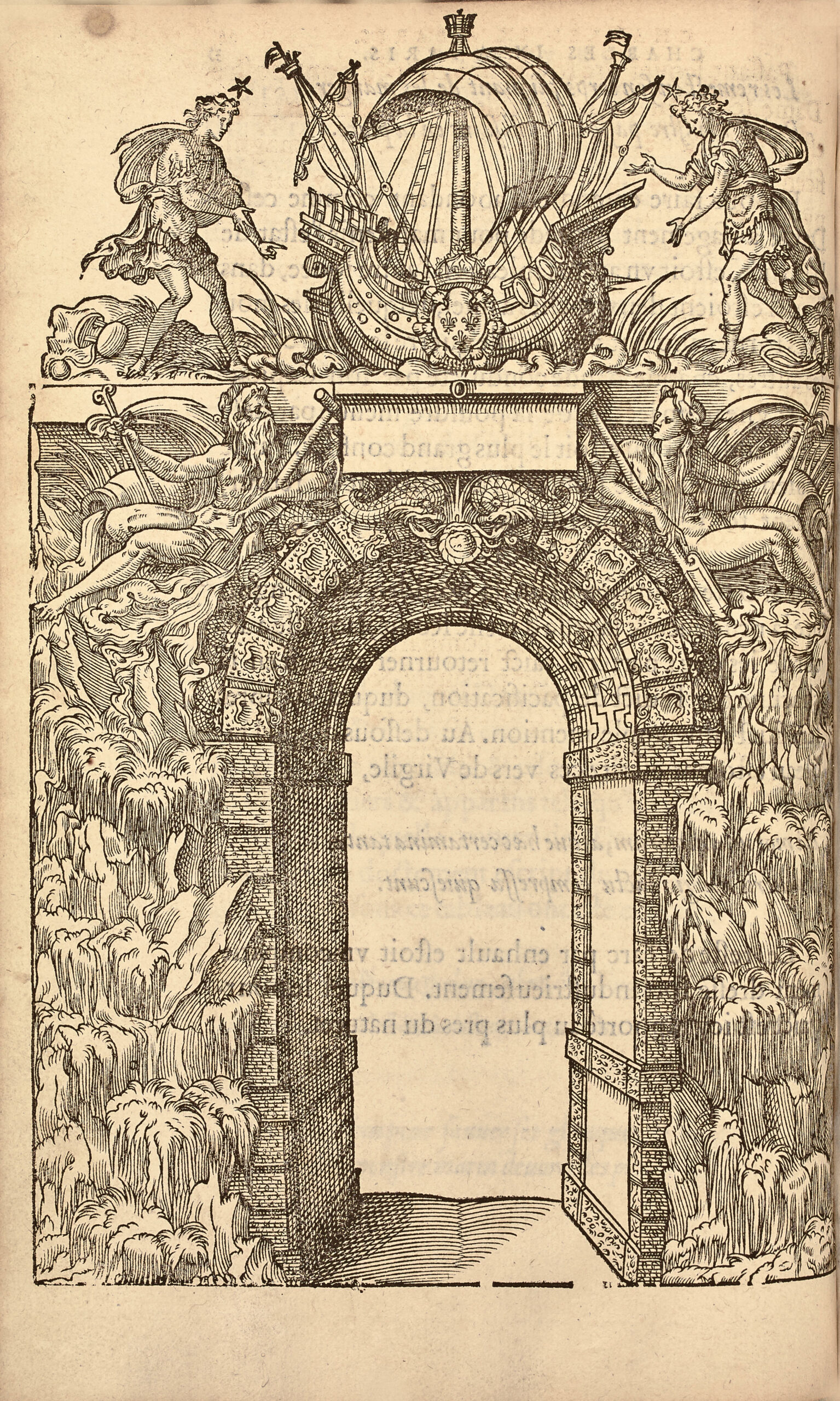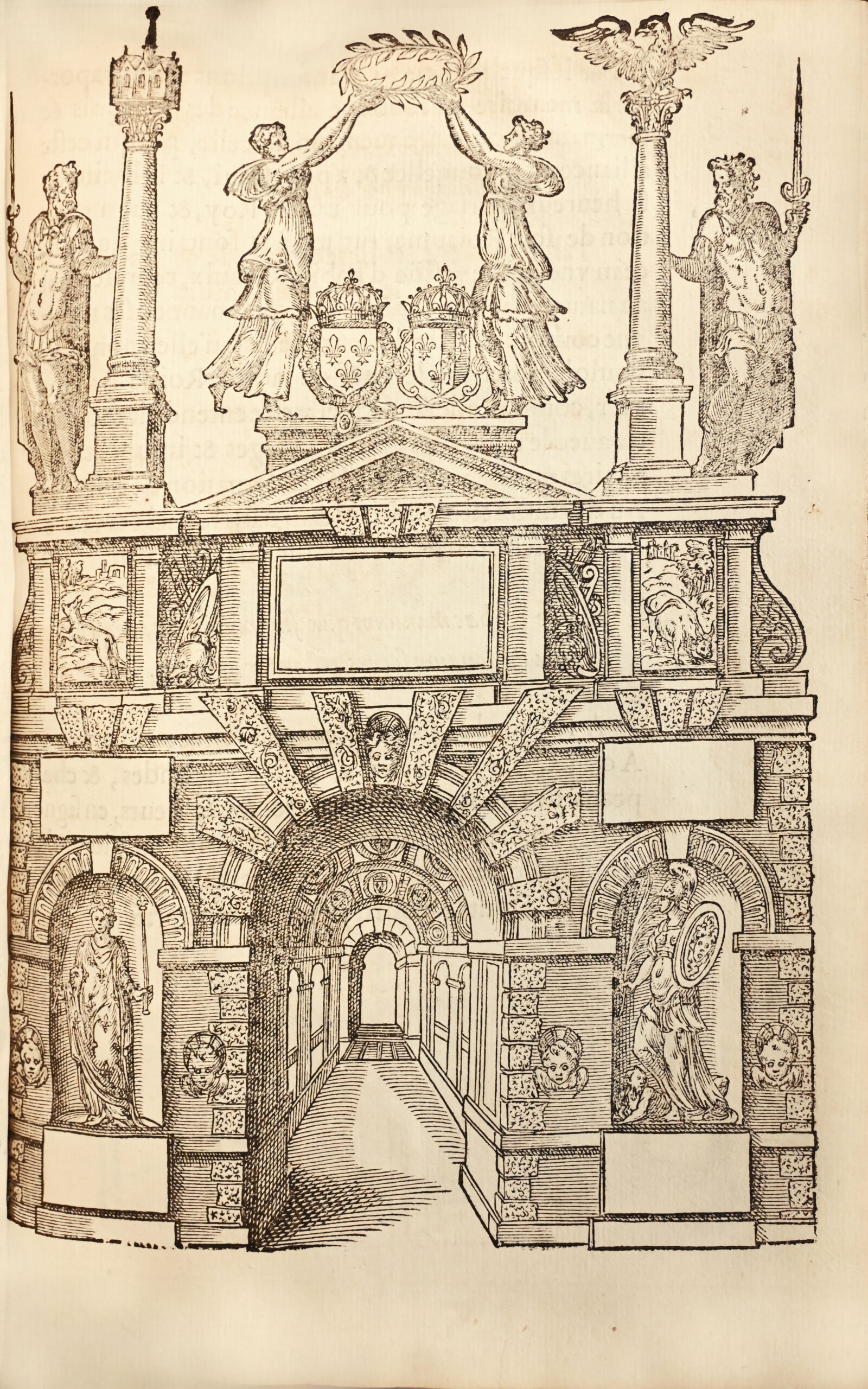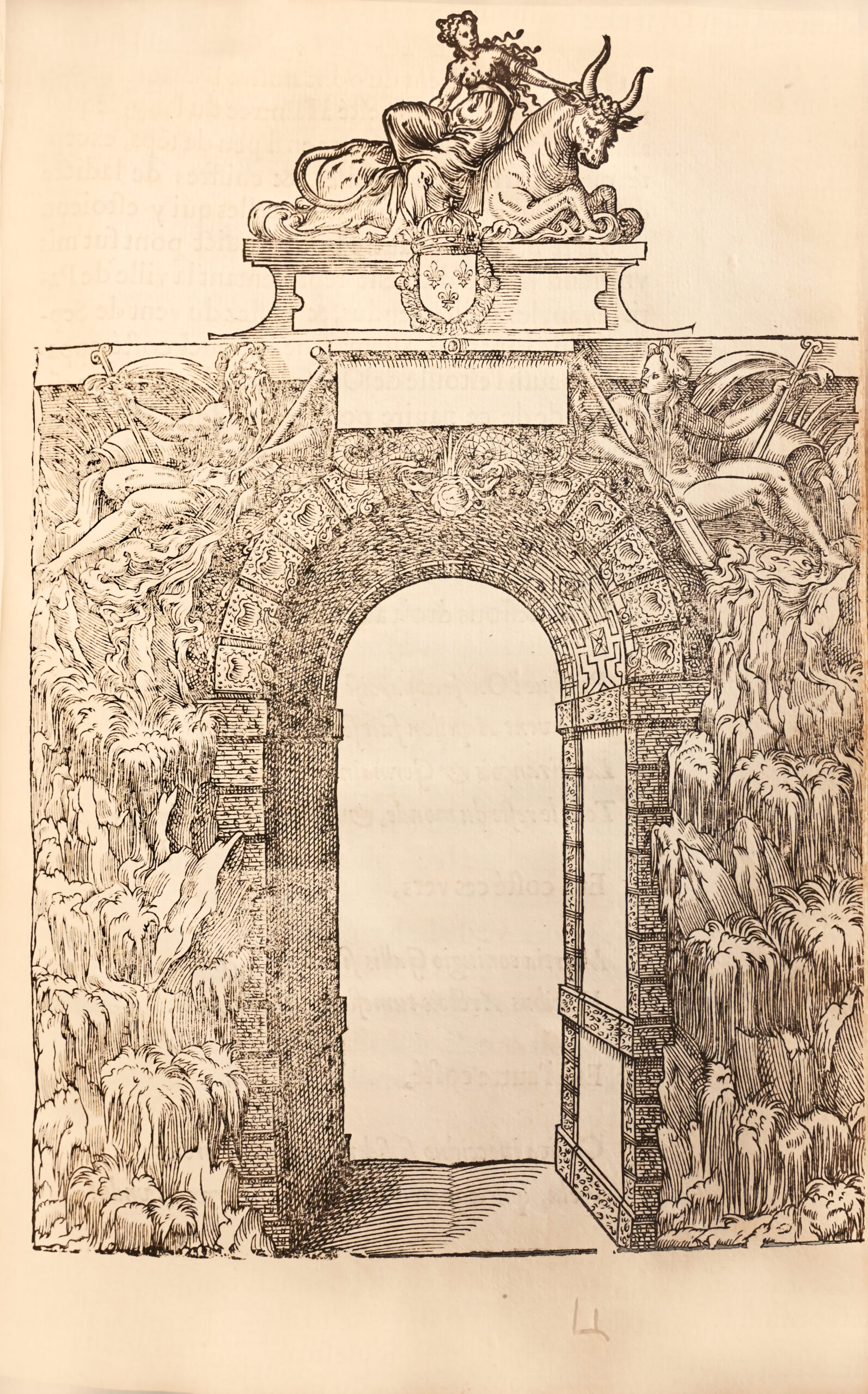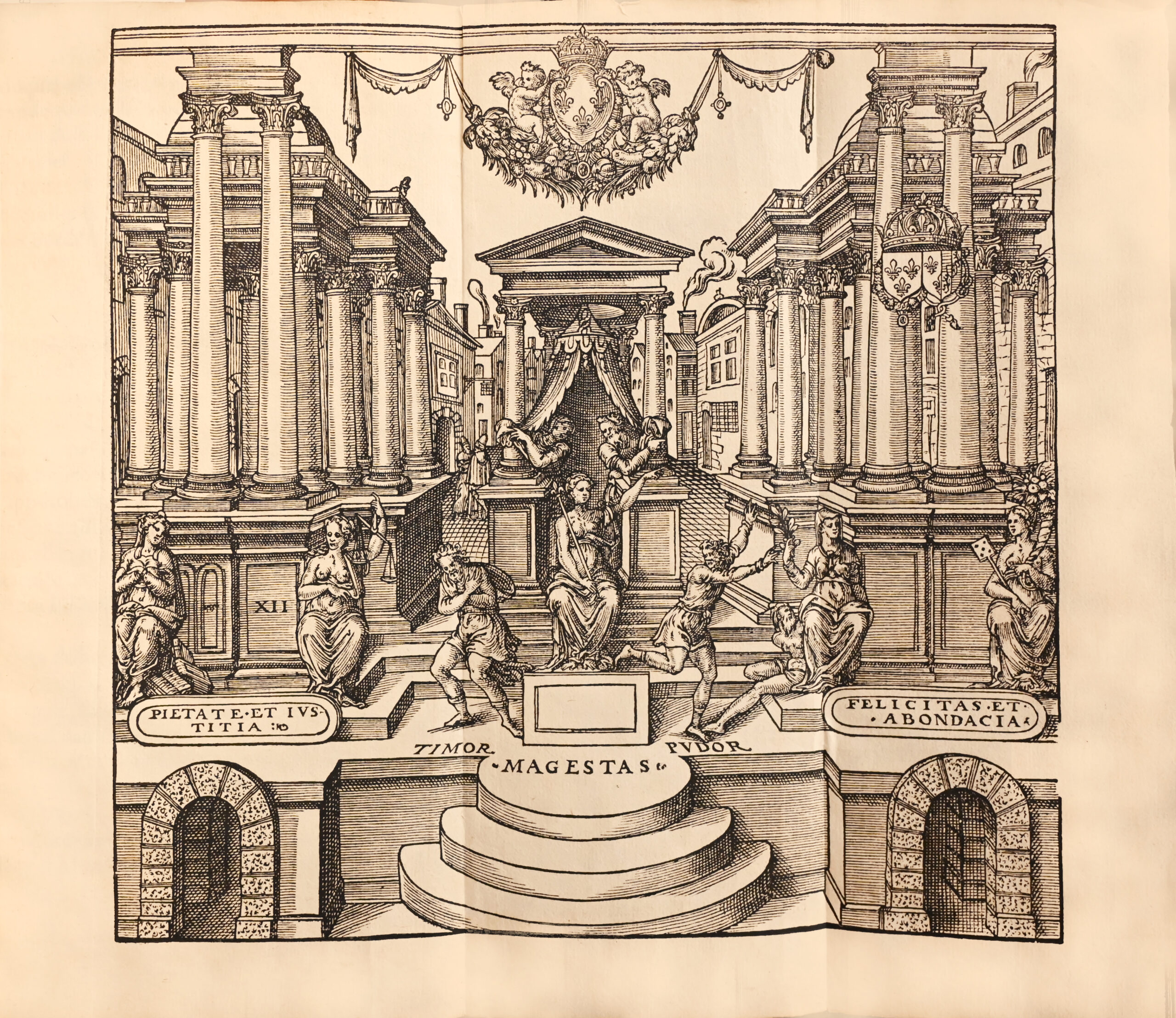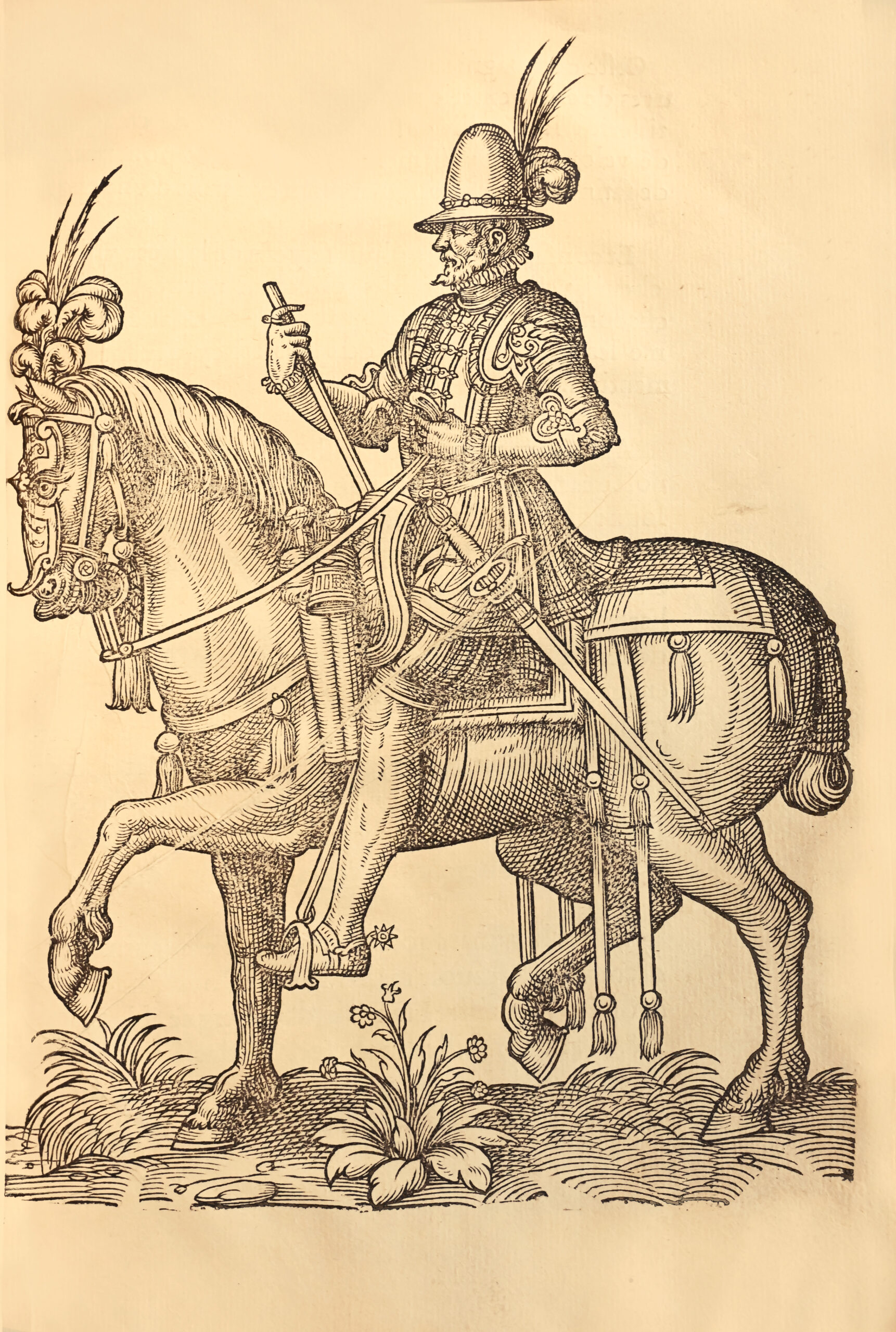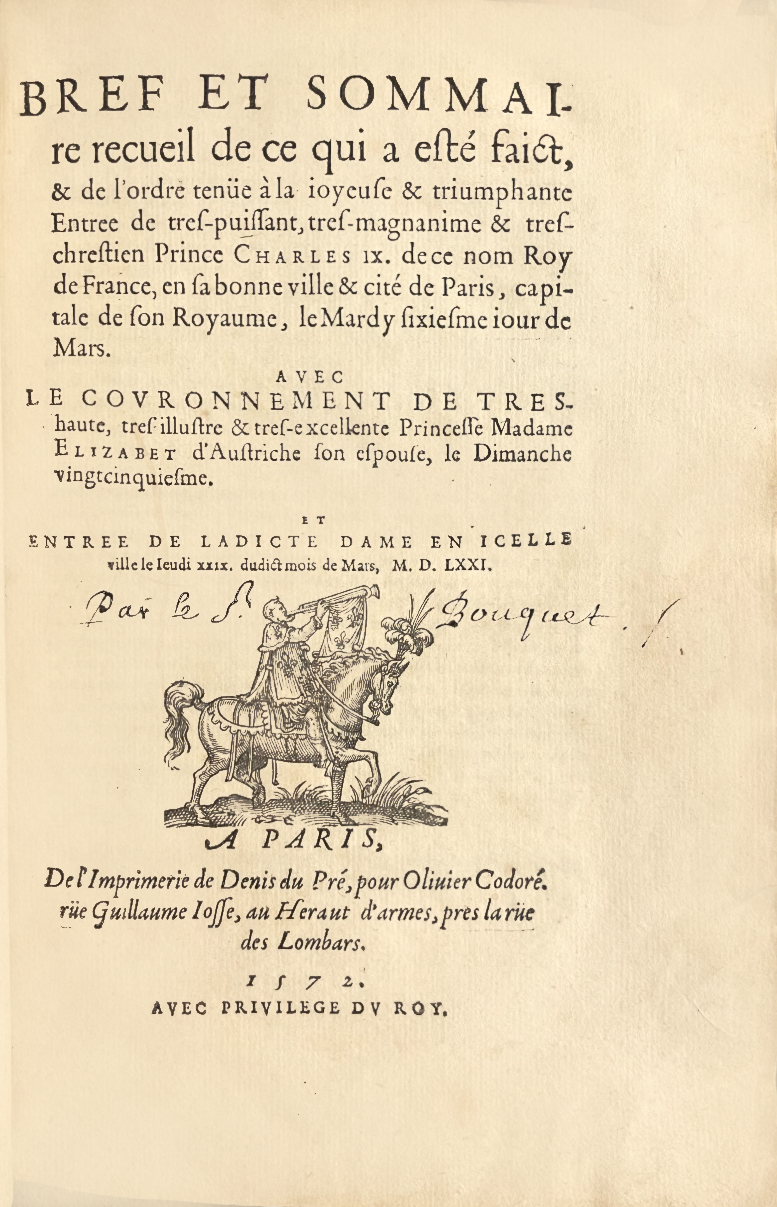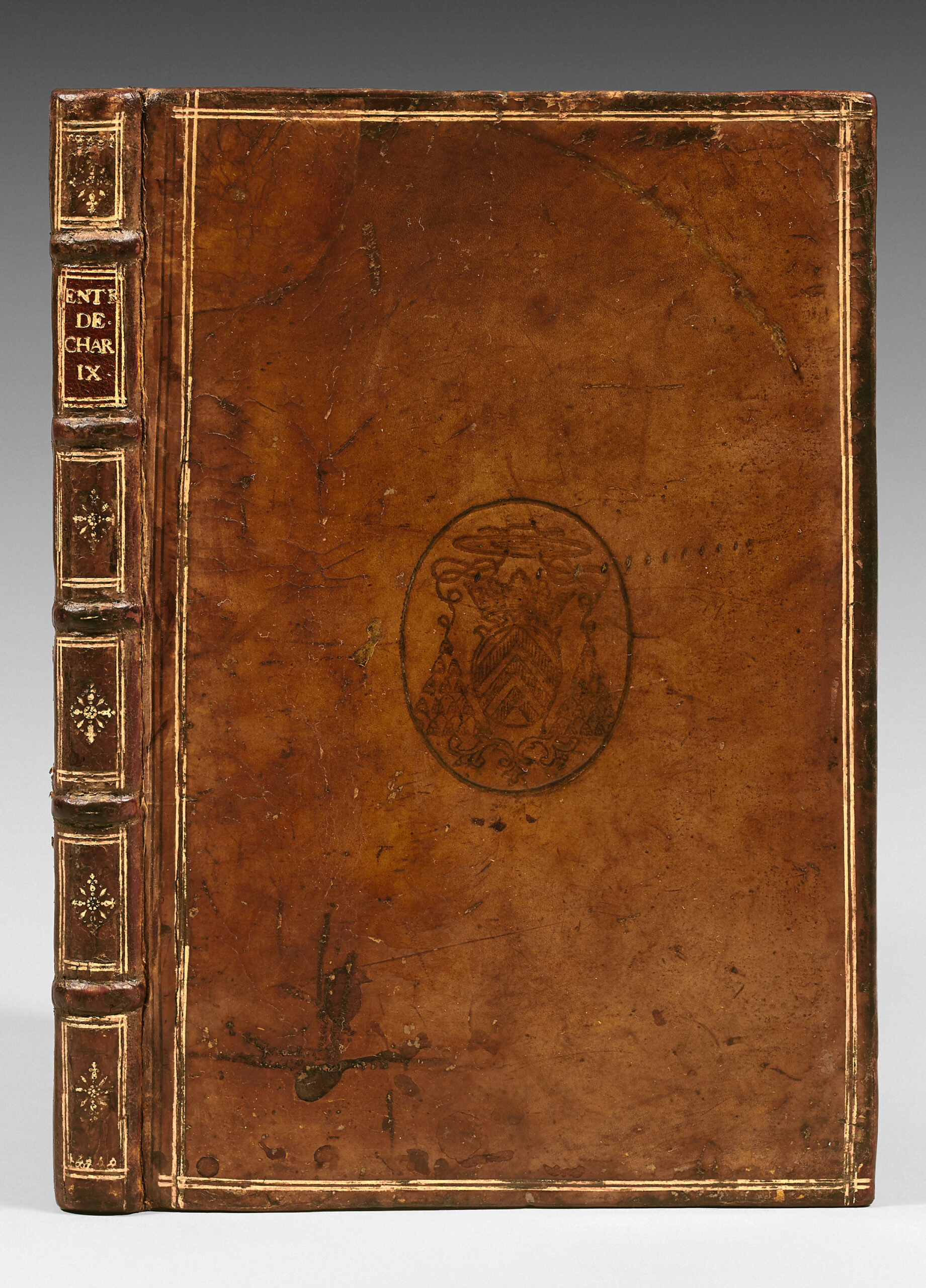Paris, Denis du Pré pour Olivier Codoré, 1572.
54 ll. including 8 full-page plates, 1 full-page plate and 1 folding plate.
C’est l’ordre et forme qui a este tenu au sacre & couronnement de tres-haute, tres-excellente, & très-puissante princesse Madame Elizabet d’Autriche Roine de France : faict en l’Eglise de l’Abbaie sainct Denis en France le vingt cinquiesme iour de Mars, 1571.
A Paris, de l’imprimerie de Denis du Pré, pour Olivier Codoré, 1571. Avec privilège du roy.
10 ll.
Entrée de la Reine. 26 ll., (1) l., (1) l.bl., 6 plates.
A total of 3 parts in 1 volume 4to. Tan calf, double gilt fillet framing the covers with coat-of-arms in the center, decorated spine. Early 17th century binding.
234 x 150 mm.
First edition and very first issue of one of the most beautiful French Renaissance celebration books.
Mortimer, French, 205; Rothschild, IV, 501-503; Tchemerzine, III, 747; Firmin Didot, Histoire de la gravure sur bois, p. 187; Vinet. Bibliographie des Beaux-Arts, no. 44; Fairfax-Murray, French, 152; Brun, Le livre français illustré de la Renaissance, 181.
First issue (headband on l. 12 recto, dévoré and not vouloir dévorer on verso, I 3 mq. B de Bouquet but signature L corrected to I during printing, M2).
Charles IX’s ceremonial entrance to Paris in march 1571 followed the peace of Saint-Germain-en-Laye in august 1570 and the end of the civil war. The King’s wedding to Elisabeth of Austria reaffirmed the desire for religious tolerance, appeasing the conflicts between Catholics and Protestants, for whom freedom of religion was recognized.
The King entered Paris on March 6, but the Queen was unwell and unable to accompany him. She entered Paris on March 29, having been crowned at the Abbey of Saint Denis on March 25. Monumental arches adorned with allegorical statues were erected for Charles’ entrance. These arches were repeated for the Queen’s entrance, but with different, more appropriate and feminine statues.
Simon Bouquet, a Parisian magistrate, was entrusted by his peers at the Hôtel de Ville de Paris with the entire organization of the festivities and the creation of the decors.
He entrusted the staging and theme to Pierre de Ronsard and Jean Dorat, who called on the artists of Fontainebleau’s first school: Germain Pilon for the sculptures, Le Conte for the carpentry and Nicolo dell’Abbate and Pierre d’Angers for the perspectives and paintings.
The central theme was obviously peace and the wedding of France and Germany, Elisabeth of Austria being the daughter of Emperor Maximilian.
The text was written by Simon Bouquet and the great French poets of the Pleiades.
Pierre de Ronsard composed 9 poems for this ceremony, mostly signed R in the Compilation.
BI « Comme une fille en toute diligence
Voyant un pré émaillé de couleurs
Entre dedans et choisissant les fleurs
Un beau bouquet pour son sein elle agence… »
Antoine de Baïf, Jean Dorat, Amadis Jamyn, Guy de Faur de Pibrac and Etienne Pasquier also competed to celebrate the event poetically.
The iconography of this remarkable work includes 16 large full-page engravings, 10 for the king’s entrance, including one folding, 6 (partial repetition of the previous ones supplemented by new woodcuts) for queen Elisabeth of Austria, wood engraved under the direction of Olivier Codoré, “cutter and engraver in precious stones”. According to Manette, this is the abbreviated name of Coldoré, a nickname given to Fontenay, future valet and gemstone engraver to Henri IV, because of the many gold necklaces he wore.
Firmin Didot suggests that the woodcuts were based on drawings by Jean Cousin.
These beautiful plates, illustrating the ephemeral triumphal arches erected at the Porte Saint Denis, the Porte au Peintre and the end of the Pont Notre-Dame, as well as the fountains and statues erected for the occasion, are reminiscent of the illustrations for Henri II’s entrance to Paris in 1549.
The illustration also has the added advantage of being “transformational” itself.
The work also features a beautiful calligraphic colophon in the form of a covered hanap.
A remarkable copy bound for Louis-Alphonse du Plessis de Richelieu (1582-1653), brother of Richelieu, archbishop of Aix and Lyon, with his silver arms on the covers.
Copies in antique bindings are extremely rare, most having been rebound – and washed in the process – at the end of the 19th century.
Mortimer describes a copy with the 4th part (9 pp., without illustration) but states “the work was also issued without the 9 leaves of Pasquier verses at the end”.
Among the three-part copies: Fairfax-Murray, Ruggieri…
This can be explained by the political context.
Pasquier’s text is in fact an apology for the Paix de Saint-Germain-en-Laye (August 1570) signed by Charles IX. Signed with Admiral de Coligny, it granted important freedoms to Protestants, and advocated tolerance and equal treatment for all subjects, whatever their religion.
After St. Barthelemy and Coligny’s assassination (August 1572), this apology for Charles IX as peacemaker could hardly have survived.
A superb copy, with wider margins than the H. P. Kraus et Friedlander’s copy in unarmored antique binding sold for €38,300 23 years ago (April 23, 2001).
